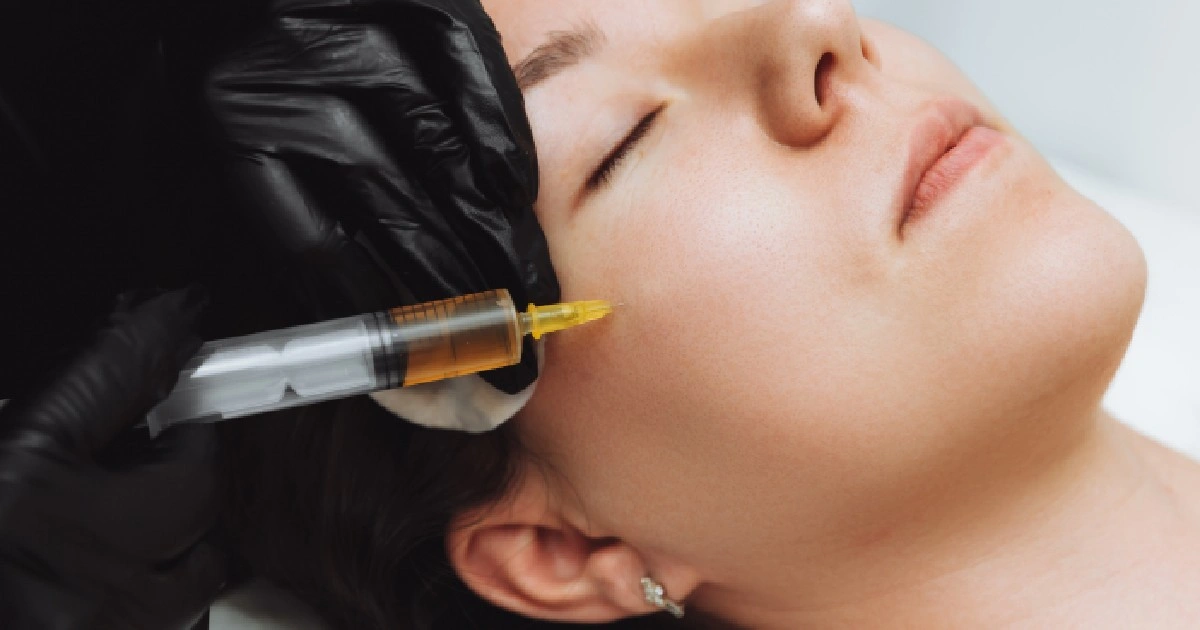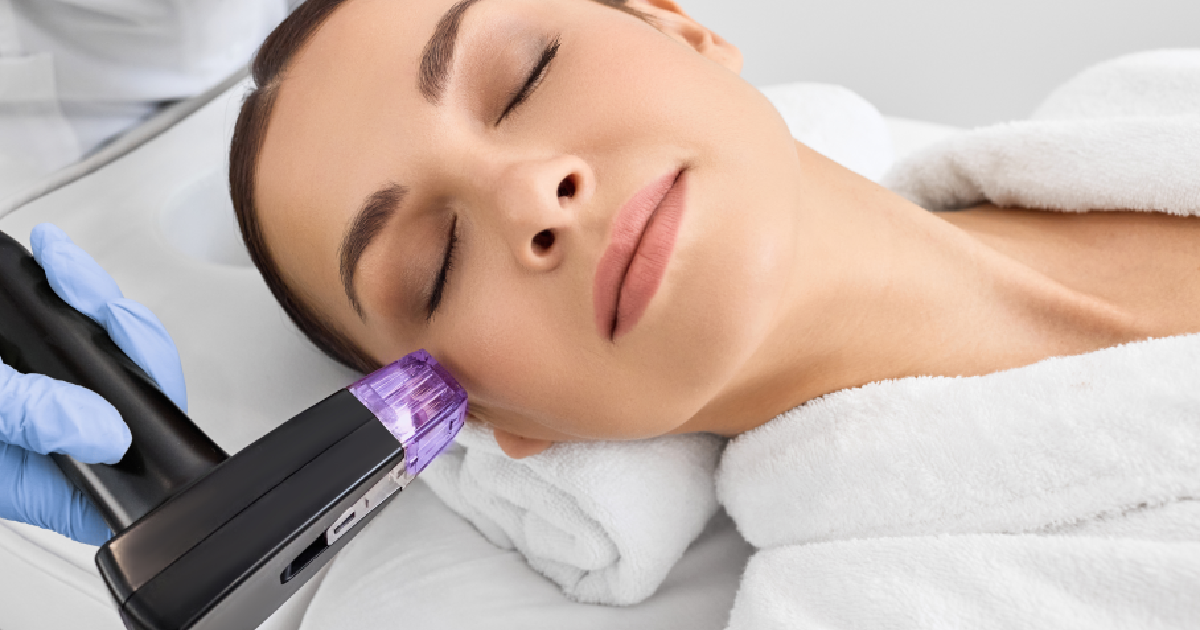Dermal fillers have risen to prominence with the aim of keeping youthful charm due to their significant impact in the aesthetics field. Acting as a non-surgical restorative, these treatments brilliantly counteract the tangible evidence of aging, effectively restoring the skin’s plumpness, erasing wrinkles, and refining the definition of facial features. Accordingly, dermal fillers represent a powerful tool in modern aesthetics, allowing individuals to rejuvenate their appearance while maintaining a natural look.
Understanding Facial Aging
Aging is a natural process that affects all aspects of our body, including the skin. Our face, in particular, bears the brunt of the passage of time. Facial aging isn’t just about getting wrinkles; it’s a complex process that involves various factors and shows in different ways.
Firstly, it’s essential to recognize the role of our skin’s key components – collagen, elastin, and hyaluronic acid. Collagen provides structure, elastin allows our skin to bounce back, and hyaluronic acid helps to retain moisture. As we age, our body’s production of these vital components decreases, leading to the loss of firmness, volume, and hydration in the skin.
Secondly, genetic factors play a part in how our skin ages. Some people may naturally have more resilient skin due to their genetic makeup.
Meanwhile, lifestyle factors such as diet, exercise, and especially sun exposure can accelerate skin aging. This process is known as “extrinsic aging.”
Ultimately, the effects of gravity also contribute to facial aging. Over time, the continuous downward pull of gravity can lead to drooping or sagging skin, particularly around the jowls, cheeks, and eyelids.
What are Dermal Fillers?
Dermal fillers are naturally occurring substances that are injected beneath the skin’s surface to increase volume and fullness. They act as “fillers” to smooth out wrinkles, fine lines, and hollow areas, enhance facial contours, and restore a youthful appearance.
In fact, hyaluronic acid fillers contribute to volume and moisture, and they are the most popular type of dermal fillers. When injected, hyaluronic acid fillers assist in repairing volume loss by smoothing out the landscape of the face and recovering its youthful plumpness.
Besides, other types of dermal fillers include calcium hydroxylapatite, a mineral-like compound found in bones; poly-L-lactic acid, a biocompatible, biodegradable synthetic substance; and polymethylmethacrylate (PMMA), a non-biodegradable, biocompatible, man-made polymer.
How Do Dermal Fillers Work?
Dermal fillers work by effectively restoring the fullness and volume that is lost in the skin due to aging. They’re injected directly into the skin in areas where wrinkles, fine lines, or volume loss are noticeable.
As signified, most dermal fillers use hyaluronic acid, a substance naturally present in our skin, joints, and eyes. Hyaluronic acid is excellent at holding onto water molecules, and when injected into the skin, it attracts moisture and swells to add volume and plumpness to the area. This not only helps fill in lines and wrinkles but also hydrates the skin from the inside, contributing to a youthful and vibrant appearance.
In addition to providing immediate volume, certain types of dermal fillers, such as poly-L-lactic acid, stimulate the body’s collagen production over time. Collagen is the skin’s main structural protein, giving it strength and suppleness. The production of collagen declines as we age, resulting in drooping and wrinkled skin.
By stimulating collagen growth, these fillers help the skin regain youthful firmness and elasticity over time. The effects of dermal fillers are typically visible immediately after treatment, and depending on the type of filler used and the individual’s skin, can last from several months to over a year. After the body gradually metabolizes the filler material, you may choose to have repeat treatments to maintain the results.
Benefits of Dermal Fillers
Dermal fillers offer several benefits for individuals seeking to rejuvenate and enhance their appearance:
- Restores Volume and Fullness: Our faces naturally lose subcutaneous fat as we age. The facial muscles then work closer to the skin surface, making smile lines and crow’s feet more apparent. Dermal fillers help fill in these areas, restoring volume and fullness to the face.
- Smoothens Wrinkles and Fine Lines: Using dermal fillers can aid in glossing out aging signs like fine lines and wrinkles, giving it a more youthful complexion. They’re particularly effective for treating laugh lines, smile lines, crow’s feet, and ‘smoker’s lines’ around the mouth.
- Enhances Facial Contours: Dermal fillers can help enhance facial contours by adding volume to areas such as the cheeks, chin, and lips. They can also correct hollow under-eye areas and improve the appearance of a recessed scar.
- Immediate and Long-Lasting Results: The results of dermal fillers are usually visible immediately after treatment. Depending on the type of filler used and individual factors like skin type and lifestyle, these results can last from a few months to over a year.
- Minimal Downtime: Dermal fillers are a non-surgical treatment with minimal recovery time. Most people can return to their usual routines immediately after the procedure.
- Improves Skin Hydration: Hyaluronic acid-based fillers not only add volume but also hydrate the skin from within, resulting in a radiant and healthy-looking complexion.
- Boosts Confidence: By rejuvenating the face and enhancing its appearance, dermal fillers can significantly boost a person’s self-esteem and confidence.
Possible Side Effects and Considerations
While dermal fillers are generally safe and effective, as with any medical procedure, there are potential side effects and considerations to bear in mind:
- Side Effects: Swelling, redness, and bruising at the injection site are common side effects. These are usually mild and temporary, resolving within a few days. Infection, lumps or bumps under the skin, and, in rare circumstances, filler migration or allergic reactions are less common but more dangerous side effects.
- Individual Variation: Everyone’s skin is different, and reactions to dermal fillers can vary. While dermal fillers can benefit most people, those with particular skin issues, allergies, or immune system diseases may not be good candidates.
- Temporary Results: Dermal fillers are not a permanent solution to aging. The body gradually metabolizes the filler over time, so repeated treatments are necessary to maintain the results.
- Qualified Professional: It’s crucial to have dermal fillers administered by a qualified professional. This makes sure that the procedure is carried out safely and effectively and minimizes the risk of complications.
- Realistic Expectations: While dermal fillers may not offer the same transformative effects as surgical procedures, they indeed hold their own by significantly improving your appearance, effectively enhancing your natural beauty and youthfulness. It’s important to discuss your goals and expectations with your provider to ensure dermal fillers are the right choice for you.
Moreover, it is recommended to consult a healthcare professional before undergoing any aesthetic procedure, including dermal fillers. They can provide valuable guidance based on your specific needs and circumstances.
Final Thoughts
Dermal fillers offer a promising path to rejuvenating your appearance, achieving youthful volume, and redefining facial contours. At Mason Aesthetics & Wellness, we provide top-of-the-line HA-based fillers, including industry leaders such as JUVÉDERM® and Restylane®. Furthermore, these exceptional products, coupled with our expertise, aim to help you accomplish your aesthetic goals by enhancing your natural beauty and combating the signs of aging.




